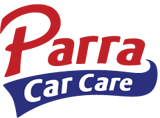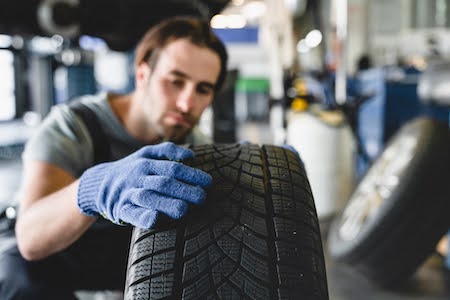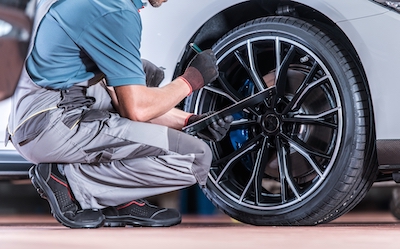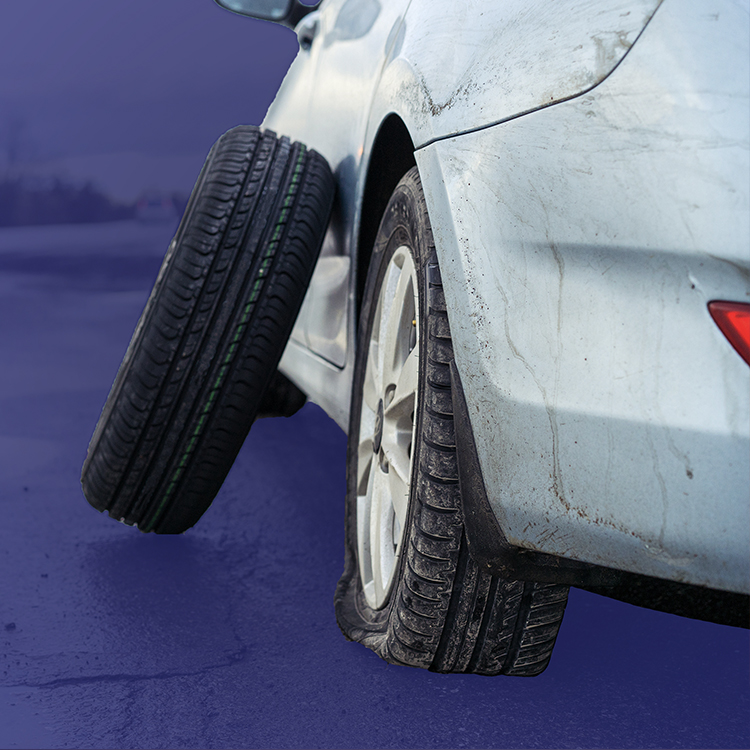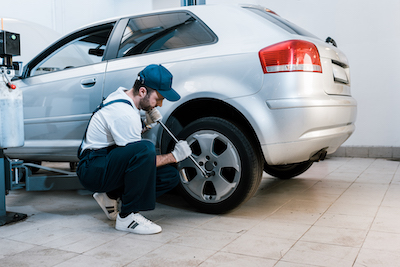 The tires on your vehicle are essential to its safety, performance, and even its fuel economy. Without properly functioning tires, your vehicle won’t be able to perform optimally and can be a danger to you and other drivers.
The tires on your vehicle are essential to its safety, performance, and even its fuel economy. Without properly functioning tires, your vehicle won’t be able to perform optimally and can be a danger to you and other drivers.
But, if you’re like many drivers, you may have several questions about new tires or what to expect at your local Euless tire shop. When is it time to replace your tires? What types of tires are available? What kind of tire repairs can be done, and when is a tire too damaged to be repaired?
This guide will explore all of these questions in depth and provide you with the information you need when it’s time to get new tires for your vehicle, as well as what to expect if you need tire repair.
How to Tell When It Is Time for New Tires
Determining when it’s time to replace your vehicle’s tires is crucial for maintaining the safety of your vehicle. There are a few key things to look out for that will help to identify the warning signs that indicate it’s time to replace your current tires. These include:
- Low tread depth: The safety of your vehicle heavily relies on the tires having sufficient tread to grip the road properly. A tread depth of at least 2/32 of an inch is recommended. If your tire tread is below this level, you should consider getting new tires very soon.
To perform what is known as the “penny test,” take a penny and insert it into the tread grooves of the tire with the top of Lincoln’s head pointing down. If you can see the top of his head, this indicates the tread depth is less than 2/32 inch, and new tires are needed. The tires are safe if the tread covers part of Lincoln’s head. - Cracks and bulges: Any cracks or bulges on the surface of your tires, especially if you can see the inner steel cord, can impact the tire’s structural integrity and increase the chance of a tire blowout. If you notice these issues, it’s likely time to get new tires.
- Uneven tread wear: Uneven wear can be caused by improper alignment, worn shocks, or incorrect tire pressure. If you notice that the tread is significantly worn down on one side of the tire compared to the other, it may be time for replacement tires.
- Vibration: If you feel vibrations coming from your tires while driving (it is usually felt in the steering wheel or seat), it could be a sign that the tread is overly worn down, and new tires may be necessary.
- Age of the current tires: The typical lifespan of tires ranges from three to five years. However, this period is subject to factors such as driving habits, road conditions, and proper tire upkeep. Even if your existing tires seem in good condition, replacing them if they are over five years old is advisable. This is because rubber tends to naturally degrade over time, which could lead to compromised safety and performance.
If you are experiencing any of these warning signs, it’s time to consider replacing your tires. At Parra Care, we have a variety of tire brands, and our tire shop is filled with knowledgeable mechanics who are ready to help. When you make us your #1 local tire shop, you can rest assured that professionals you can trust will be evaluating your tires.
Tire Types 101: A Brief Breakdown of the Different Options
If you’ve determined that you need new tires, the next step is to start narrowing down the available options. The first step of this process is determining which type of tire may be the best fit for your vehicle.
At the tire shop or online, you’ll probably hear or come across a ton of tire terms, many of which are related to the different tire types. Modern-day tire manufacturers consider factors like weather, road conditions, and driving habits while engineering tires. Therefore, if you know the handling requirements you need and the environmental conditions you’ll mainly be driving in, you can narrow down your options for new tires.
To help you decide which tire type is the best for you, here is a brief breakdown of the most common tire types available:
All-Season Tires
These tires offer a balance between performance, safety, and dependability in a wide range of driving conditions. They come with a tread pattern that provides good traction on wet and dry surfaces, and their rubber compound is designed to resist wear in hot weather conditions. While they can deliver decent grip in light snow, these tires aren’t ideal for extreme winter conditions such as sub-zero temperatures, heavy snow, and thick ice. They are a perfect fit for drivers living in regions that experience mild winter weather and prefer to keep tires the same according to season.
Summer Tires
These tires are specifically designed for hot weather conditions and are sometimes called “regular tires” in warmer climates. They are made with a softer rubber compound that provides excellent grip and handling on dry, hot roads. The tread on summer tires has deeper and wider grooves to help expel water and reduce the risk of hydroplaning. Additionally, they come with stiffer sidewalls that help maintain the tire’s shape when cornering at higher speeds. They offer better grip and enhanced performance during the hot summer months.
Winter Tires
Winter tires, also referred to as snow tires, are a must if you live in an area with heavy snowfall. These tires are designed specifically for cold temperatures and driving on snowy or icy surfaces. These tires feature a special rubber compound that stays flexible in cold temperatures and a tread pattern with wide grooves and sipes (channels) that are designed to help clear snow and ice from beneath the tire.
Touring Tires
Touring tires are a good choice for everyday driving, offering a balance of grip, low noise, and comfort. They have a larger tread pattern than performance tires, improving traction in wet weather. Touring tires are made with a soft rubber compound for a comfortable ride and reduced road noise while still offering good wear resistance. These tires are an excellent option for those who prioritize comfort and longevity over performance tires’ aggressiveness, as they have a longer tread life.
High-Performance Tires
These tires are designed for high-performance sports cars, providing optimal cornering, acceleration, and braking in dry and wet conditions. Made with a softer rubber compound, these tires have a more aggressive tread pattern with larger tread blocks and wider grooves for improved wet traction. Keep in mind that performance tires will wear faster than other types of tires.
All-Terrain Tires
All-terrain tires are an excellent option for drivers who need a tire that can handle a variety of road and off-road conditions. These tires have a larger and more aggressive tread pattern than all-season tires, with deeper grooves and tougher rubber for better grip in sand, gravel, light mud, and snow.
Mud Tires
Tire types vary based on their intended use. Mud tires, or mud-terrain tires, are specifically designed for off-road driving on challenging terrains such as larger rocks and thick mud. These tires have a more aggressive tread pattern than all-terrain tires, featuring beefy tread blocks and wider grooves for enhanced off-road traction. Like all-terrain tires, mud tires are made of a durable and puncture-resistant rubber compound.
Run-Flat Tires
Run-flat tires are available for some tire types, especially all-season tires. These tires are constructed with a reinforced sidewall that allows them to be driven on temporarily after a puncture or blowout. This feature can provide peace of mind, as drivers can safely reach a tire shop after a tire failure by driving on run-flat tires at a reduced speed for a limited distance.
Spare Tires
When purchasing new tires, it is essential to consider the spare tire. A reliable spare tire is crucial in case of a flat tire. Spare tires can be full-size or compact, with full-size tires providing a permanent solution and compact tires intended as a temporary fix until you can get a replacement tire from the tire shop.
Professional Tire Repair Methods for Flat Tires
As a driver, you know a flat tire can ruin your day, especially if it happens to a relatively new tire. The good news is that not all flat tires need to be replaced. In fact, in most cases, it can be repaired. Knowing what to expect at the tire shop when you need tire repair service can be helpful.
First, it’s important to break down the types of tire repair methods that are most commonly used. These include:
Patching
Patching is a safe and effective repair method for most punctures and cuts. Patching involves removing the tire from the wheel and applying a patch to the inside of the tire. The patch seals the puncture or cut and prevents air from escaping. Most professional tire shops prefer to patch a tire because it is a longer-lasting repair.
Plugging
Plugging involves inserting a rubber plug into the puncture or cut from the outside of the tire. The plug sufficiently seals the hole and prevents air from escaping. Plugging is a quick and easy repair method, but it is less reliable than patching.
Types of Tire Damage
Understanding the different types of tire damage can help you determine the most effective repair option (if the tire can be safely repaired) and prevent further damage.
There are three types of tire damage:
Punctures
These are small holes in the tire caused by a sharp object such as a nail or screw. Punctures can usually be repaired if they are not overly large.
Cuts
Cuts are longer and deeper than punctures and are caused by sharp objects such as glass or metal. Cuts can be repaired if they are relatively small and are within the tire tread.
Impacts
Impact damage can occur when a tire hits a curb or pothole, causing damage to the tire’s sidewall or inner belts. In the case of an impact, the tire cannot be repaired and must be replaced.
How to Tell if a Tire Can Be Repaired
In many cases, a tire professional can repair a flat tire. But there are some instances where repairing it may not be safe or effective. Here are some guidelines to determine if a tire can be repaired:
- The damage is located on the tread area of the tire.
- The puncture or cut is less than 1/4 inch in diameter.
- The cut is no more than 1/4 inch wide and not located on the sidewall.
- The flat tire has not been driven on.
- The tire has not been repaired before.
Parra Car Care is Your Trusted Local Tire Shop
With everything we’ve covered above, you should now better understand the different types and sizes of tires and tire repair, including the indicators that will tell you when it’s time to purchase new tires and what to anticipate during the repair process.
When you need a dependable local tire shop, Parra Car Care is the trusted go-to for new tires. The tire specialists at each of our locations are available to assist you in navigating the diverse range of tire options. We can answer any questions you may have and help ensure that you get optimal replacement tires for your vehicle and driving requirements.
We also offer a comprehensive range of tire maintenance services, including tire repair, rotation, balancing, and wheel alignment. Our team can help you determine a maintenance schedule that maximizes the lifespan of your tires. And as a one-stop auto care center, our expert mechanics can handle all your vehicle’s maintenance and repair needs while providing the highest level of customer service.
Tire Shop Guide FAQs
Where can I get the best deal on tires?
If you're looking for the best tire shop in Euless, TX, you're in the right place! Parra Car Care offers a huge selection of tires from leading brands, but you won't have to pay exorbitant prices for these wheels. Instead, you'll get a better deal than you would anywhere else thanks to our online coupons.
Along with saving on new tires, you can also cut tire repair and maintenance costs with our selection of financing options. Plus, you'll never be left in the dark about the price of this work, as we offer quotes for our services at your request. Enjoy these benefits and many others by visiting our Euless tire shop today!
What should I ask when buying tires?
When it's time to buy new tires, ask the people working at your tire shop questions like these before making your decision:
- Are my current tires the right fit for my car? Even if you're happy with your current tires, you could get even better performance from your next set of wheels. By asking this question, you can ensure that you aren't missing out on opportunities like these.
- What tires would match my driving habits? Depending on how and where you drive, some tires will be a better fit for your situation than others. Of course, it's in your best interest to consider this when shopping for new wheels.
- How long will my new tires last? If your new tires have a mileage warranty, you'll have no trouble estimating how long they'll last under normal conditions.
What happens if you drive with worn out tires?
As tires age, they become less effective at dealing with the challenges presented by the open road. Eventually, your wheels will lose traction, become less capable of braking, and have trouble maintaining air pressure. Old tires also have an increased risk of blowouts.
As a result, local drivers shouldn't rely on tires that are approaching the end of their service life. Instead, buy a new set of wheels at the most trustworthy tire shop in Euless — Parra Car Care!
How can you tell if your tires are worn out?
Though no driver wants to replace their tires before they need to, hanging on to aging wheels for too long is never a good idea. Though this can technically help you save money in the short term, you'll have to replace your tires at some point — and continuing to use old wheels could put your safety and the safety of your passengers at risk.
If you suspect that your tread wear is reaching unsafe levels, try performing the “penny test.” All you have to do is find a standard U.S. penny, hold it with the head facing down, and push it into the grooves of your tires. When you can see the top of Lincoln's head when doing this, you'll need to start thinking about buying new wheels.
Of course, tread wear is just one sign that your tires need to be replaced. If your wheels are approaching three to five years of use, have developed cracks, or rapidly lose tire pressure, it may be time to visit a local tire shop for a new set of wheels.
